Filter by
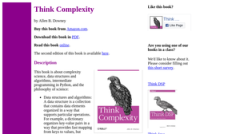
Think Complexity
This book is about complexity science, data structures and algorithms, intermediate programming in Python, and the philosophy of science. This book focuses on discrete models, which include graphs, cellular automata, and agent-based models. They are often characterized by structure, rules and transitions rather than by equations. They tend to be more abstract than continuous models; in some cas…
- Edition
- -
- ISBN/ISSN
- -
- Collation
- -
- Series Title
- -
- Call Number
- 005 DOW t
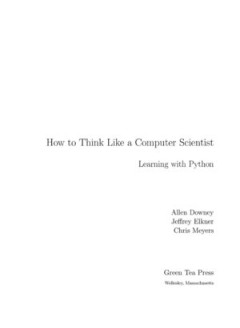
How to Think Like a Computer Scientist : Learning with Python
"How to Think Like a Computer Scientist: Learning with Python" is an introduction to computer science using the Python programming language. It covers the basics of computer programming, including variables and values, functions, conditionals and control flow, program development and debugging. Later chapters cover basic algorithms and data structures. *** Published under the terms of the GNU F…
- Edition
- -
- ISBN/ISSN
- 0-9716775-0-6
- Collation
- -
- Series Title
- -
- Call Number
- 005 DOW h
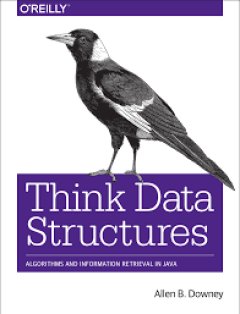
Think Data Structures : Algorithms and Information Retrieval in Java
This book is intended for college students in computer science and related fields, as well as professional software engineers, people training in software engineering, and people preparing for technical interviews. Before you start this book, you should know Java pretty well; in particular, you should know how to define a new class that extends an existing class or implements an interface. If …
- Edition
- -
- ISBN/ISSN
- -
- Collation
- -
- Series Title
- -
- Call Number
- 004 DOW t
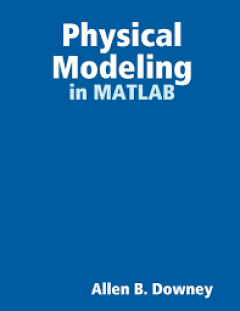
Physical Modeling in MATLAB
Most books that use MATLAB are aimed at readers who know how to program. This book is for people who have never programmed before. As a result, the order of presentation is unusual. The book starts with scalar values and works up to vectors and matrices very gradually. This approach is good for beginning programmers, because it is hard to understand composite objects until you understand basic…
- Edition
- -
- ISBN/ISSN
- -
- Collation
- -
- Series Title
- -
- Call Number
- 005 DOW p
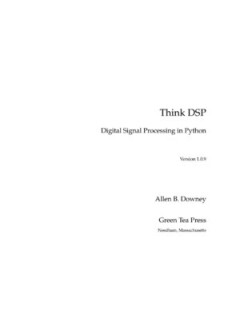
Think D.S.P.
Think D.S.P. is an introduction to Digital Signal Processing in Python. The premise of this book (and the other books in the Think X series) is that if you know how to program, you can use that skill to learn other things. The author is writing this book because he thinks the conventional approach to digital signal processing is backward: most books (and the classes that use them) present the m…
- Edition
- -
- ISBN/ISSN
- -
- Collation
- -
- Series Title
- -
- Call Number
- -
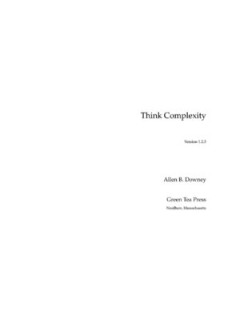
Think Complexity
This book is about complexity science, data structures and algorithms, intermediate programming in Python and the philosophy of science: Data structures and algorithms: A data structure is a collection that contains data elements organized in a way that supports particular operations. For example, a dictionary organizes key-value pairs in a way that provides fast mapping from keys to values, bu…
- Edition
- -
- ISBN/ISSN
- -
- Collation
- -
- Series Title
- -
- Call Number
- -
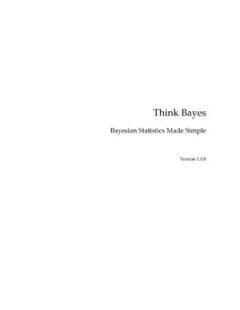
Think Bayes
Think Bayes is an introduction to Bayesian statistics using computational methods.The premise of this book, and the other books in the Think X series, is that if you know how to program, you can use that skill to learn other topics.Most books on Bayesian statistics use mathematical notation and present ideas in terms of mathematical concepts like calculus. This book uses Python code instead of …
- Edition
- -
- ISBN/ISSN
- -
- Collation
- -
- Series Title
- -
- Call Number
- -
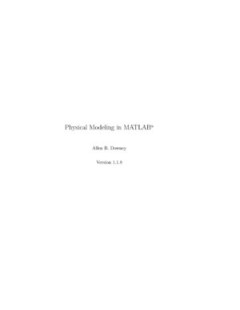
Physical Modeling in MATLAB
Most books that use MATLAB are aimed at readers who know how to program. This book is for people who have never programmed before. As a result, the order of presentation is unusual. The book starts with scalar values and works up to vectors and matrices very gradually. This approach is good for beginning programmers, because it is hard to understand composite objects until you understand basic …
- Edition
- -
- ISBN/ISSN
- -
- Collation
- -
- Series Title
- -
- Call Number
- -
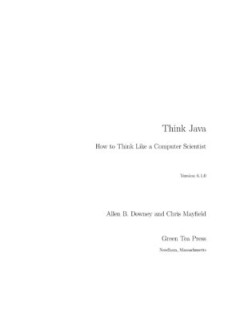
Think Java How To Think Like a Computer Scientist, Version 6.1.0
Think Java is an introduction to computer science and programming intended for readers with little or no experience. We start with the most basic concepts and are careful to define all terms when they are first used. The book presents each new idea in a logical progression. Larger topics, like recursion and object-oriented programming, are divided into smaller examples and introduced over the c…
- Edition
- -
- ISBN/ISSN
- -
- Collation
- -
- Series Title
- -
- Call Number
- -

How to Think Like a Computer Scientist
How to Think Like a Computer Scientist: Learning With Python is an introduction to programming using Python.
- Edition
- -
- ISBN/ISSN
- -
- Collation
- -
- Series Title
- -
- Call Number
- -
 Computer Science, Information & General Works
Computer Science, Information & General Works  Philosophy & Psychology
Philosophy & Psychology  Religion
Religion  Social Sciences
Social Sciences  Language
Language  Pure Science
Pure Science  Applied Sciences
Applied Sciences  Art & Recreation
Art & Recreation  Literature
Literature  History & Geography
History & Geography